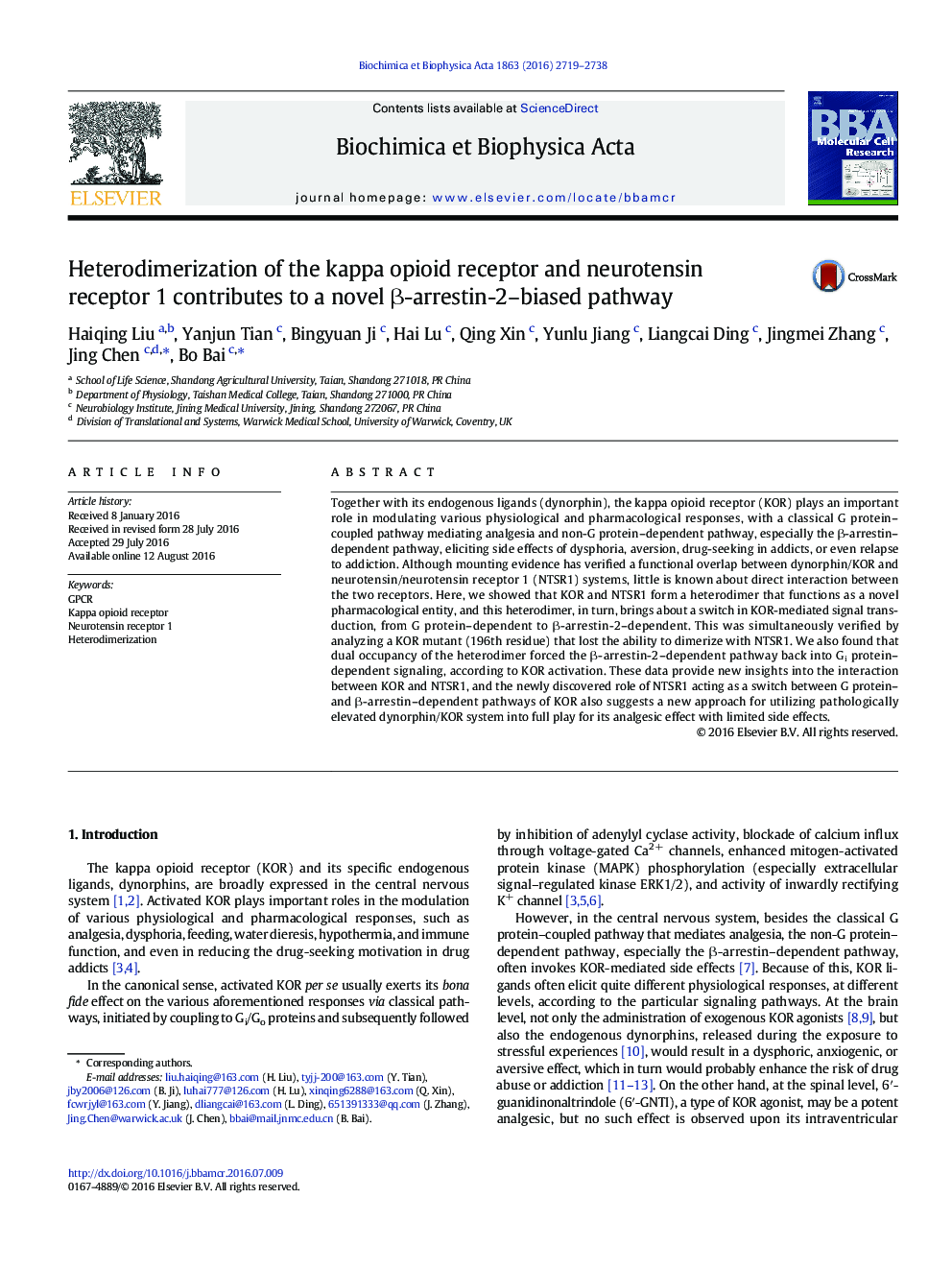| Article ID | Journal | Published Year | Pages | File Type |
|---|---|---|---|---|
| 5508698 | Biochimica et Biophysica Acta (BBA) - Molecular Cell Research | 2016 | 20 Pages |
â¢KOR and NTSR1 form heterodimers that function as a novel pharmacological entity.â¢The KOR 196th residue is crucial for constitutive KOR-NTSR1 heterodimer formation.â¢Heterodimerization with NTSR1 switches KOR-mediated signaling to β-arrestin-2-dependent.â¢Dual occupancy of KOR-NTSR1 dimers reverts β-arrestin-2- to G protein-dependent signaling.
Together with its endogenous ligands (dynorphin), the kappa opioid receptor (KOR) plays an important role in modulating various physiological and pharmacological responses, with a classical G protein-coupled pathway mediating analgesia and non-G protein-dependent pathway, especially the β-arrestin-dependent pathway, eliciting side effects of dysphoria, aversion, drug-seeking in addicts, or even relapse to addiction. Although mounting evidence has verified a functional overlap between dynorphin/KOR and neurotensin/neurotensin receptor 1 (NTSR1) systems, little is known about direct interaction between the two receptors. Here, we showed that KOR and NTSR1 form a heterodimer that functions as a novel pharmacological entity, and this heterodimer, in turn, brings about a switch in KOR-mediated signal transduction, from G protein-dependent to β-arrestin-2-dependent. This was simultaneously verified by analyzing a KOR mutant (196th residue) that lost the ability to dimerize with NTSR1. We also found that dual occupancy of the heterodimer forced the β-arrestin-2-dependent pathway back into Gi protein-dependent signaling, according to KOR activation. These data provide new insights into the interaction between KOR and NTSR1, and the newly discovered role of NTSR1 acting as a switch between G protein- and β-arrestin-dependent pathways of KOR also suggests a new approach for utilizing pathologically elevated dynorphin/KOR system into full play for its analgesic effect with limited side effects.
